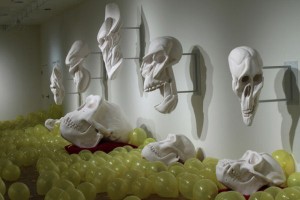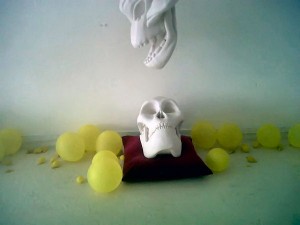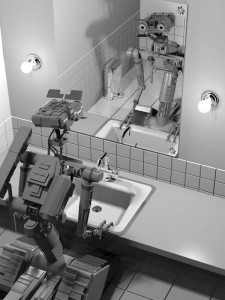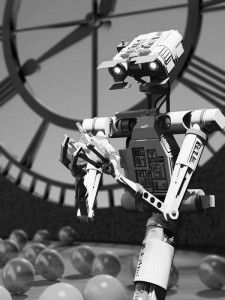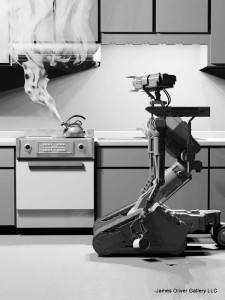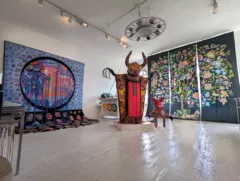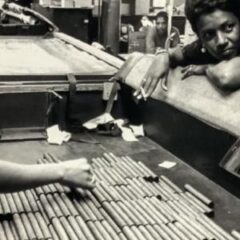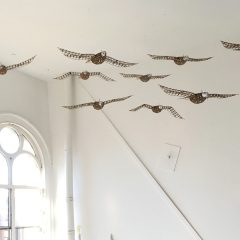by Christina Heppard
Joe Meiser’s solo show, INFLUX, at James Oliver Gallery (through Aug. 4), explores the boundaries of the human condition. The show transforms the space at JOG with large-scale black and white photographs, sculptures, and a floor covering of golden, half-deflated (at least a few weeks after the opening) balloons.
The artist’s interest in the human condition comes from his study of religion, spirituality and philosophy, but also, he says in his artist statement, from his amazement with the idea of consciousness and the body.
Meiser’s “Hominid and Simian Souls (numbers 1-6),” a large installation of white, larger-than-life skulls, is an example of the artist dealing with ideas of death, the body, and consciousness in a somewhat playful way. Interestingly, Meiser, who teaches art at Bucknell University, worked for a while as a designer for Hasbro toys.
Five of the six Hominid sculptures are arranged along one wall, with one sitting apart on a wall close to the end of the gallery. Each sculpture consists of three parts: a hominid skull sitting on the floor on a red velvet pillow and the same skull distorted, on the wall above. The skull on the pillow looks as if it is being paid homage. Meiser appears to be distorting the skulls in an effort to think past the human form. The distorted skulls evoke the transience of human emotions, like anger or joy, which are expressed via facial distortions, then gone.
The large and theatrical installation of “Hominid” is slightly humorous and makes the whole piece rather endearing. It seems to be the physical embodiment of Meiser’s statement, “The body feels quite permanent to its owner, but it is actually a temporary material object.”
The wall opposite Hominid displays a series of seven black and white photographs that tell the story of a robot reflecting (literally and figuratively) and reacting to its domestic, consumerist, and controlled environment. The robot experiences several human emotions throughout its journey around a domestic space. One of the photographs — which looks like a film still from a movie — illustrates the robot’s realization of strength when he pops a balloon. This moment seems to define and consume the robot.
The real balloons that cover the gallery floor imply the robot’s energy spilled out of the photos and into the real world. As we, the viewers, tiptoe around the balloons, we are like the robot, vulnerable yet capable of destructive acts. The experience of both existing in the balloon-filled space and witnessing the robot’s identity crisis is a witty and complex layer of the installation.
Overall, I enjoyed participating in and contemplating Meiser’s assemblage of the human psyche. The poetic and humorous show, where robots have feelings and the viewer almost literally walks on eggshells (well balloons, really) lays out an idea of human life as mysterious, fragile, sometimes funny, and always worthy of contemplation.


